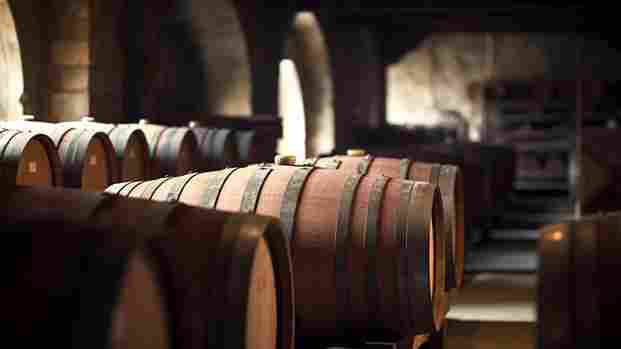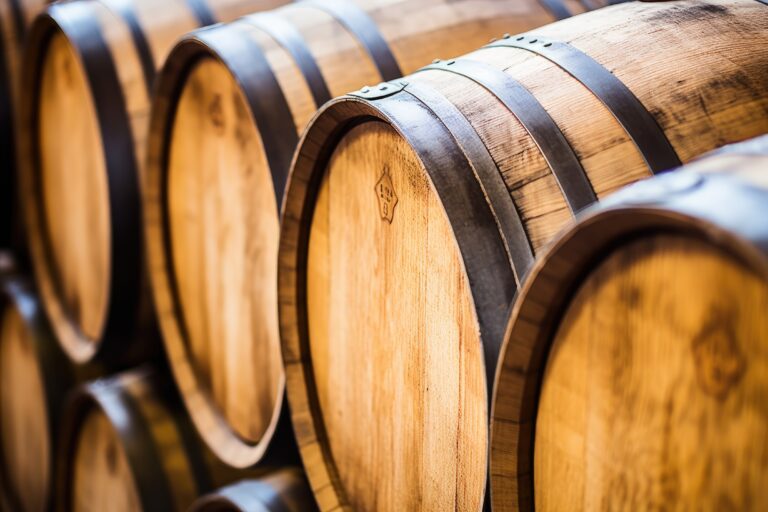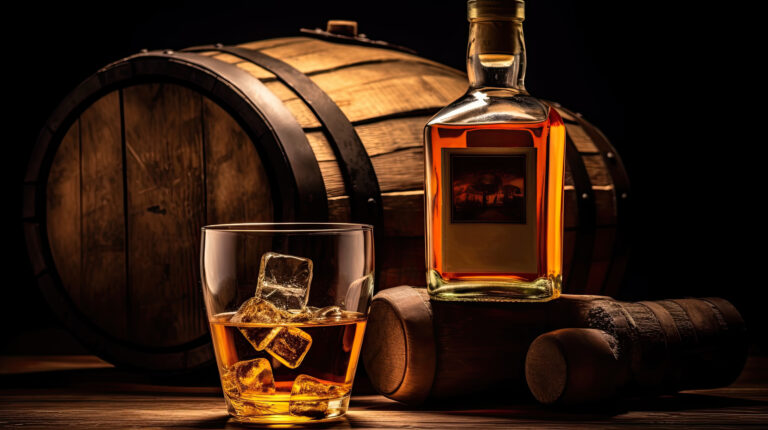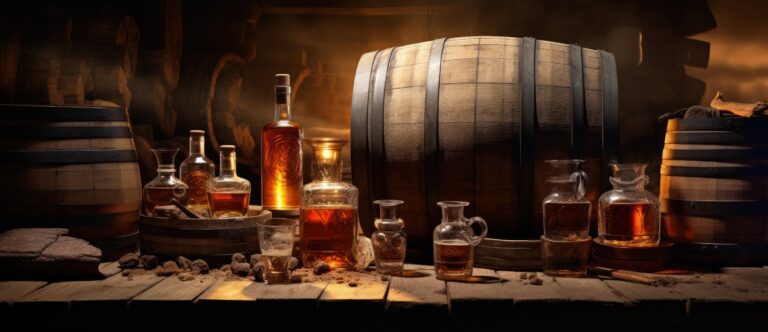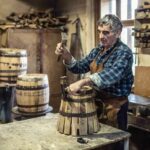Ever wonder what really happens inside those oak barrels as your favorite whiskey ages to perfection? The aging process is a complex interaction of wood, spirit, and time that creates the distinctive flavor profiles found in aged whiskeys. As a whiskey connoisseur, you know that aging is one of the most important factors determining the taste, aroma, and quality of the final spirit. But have you ever stopped to think about the literal chemistry occurring in those charred oak barrels over months and years?
The aging of whiskey is part art and part science. Master distillers and blenders rely on years of experience and intuition to determine when a whiskey has reached peak maturity and flavor. But there are also some fascinating chemical reactions taking place with the wood and the whiskey that impart distinctive notes like vanilla, caramel, and smoke. Over time, the whiskey absorbs compounds from the wood and undergoes oxidation and evaporation that collectively transform harsh, clear distillate into a smooth, amber elixir.
Though aging whiskey is a time-honored tradition, the underlying processes are still not fully understood. But scientists are starting to get a clearer picture of the molecular magic behind barrel aging. Let’s take a peek inside those barrels to explore the science of how wood and whiskey interact over time to create a finished product far greater than the sum of its parts. The aging process may be an art, but it’s also a beautiful science.
How Barrels Impact Whiskey Flavor
The aging process is key to developing the complex flavors of whiskey. As the spirit sits in charred oak barrels, several chemical reactions take place.
First, the whiskey extracts compounds like lactones from the wood, giving it notes of coconut and vanilla. The char inside the barrel also imparts smoky flavors.
Oxygen enters the barrel through the wood, mellowing the whiskey. This oxidation helps form esters that provide fruity aromas like apple or banana.
The whiskey also pulls tannins from the oak, giving it a drier, spicier taste. The tannins and other wood compounds create the amber color.
The barrel aging allows all these elements to blend and balance. As the whiskey sits, the flavors integrate, become smoother and more rounded.
The location of the warehouse and temperature variations also affect the aging. Colder temperatures cause the wood to contract, allowing more air in. Warmer weather speeds up chemical reactions. These factors create the whiskey’s sense of place.
Barrel aging is a complex process, but the results are well worth the patience. Sipping an aged whiskey is like tasting liquid history. The distinctive flavors imparted by oak and time give each whiskey a unique character.
The Chemical Reactions of Maturation
Once the distilled spirit goes into the barrel, the real magic happens.
The whiskey interacts with the wood, extracting flavors and aromas. As it ages, chemical reactions break down complex compounds in the spirit into simpler ones that impart distinctive characteristics found only in aged whiskeys.
Alcohol and water in the whiskey penetrate the wood, drawing out tannins, lignins, and phenols. These impart the amber color and woody, spicy flavors. The high proof alcohol also dissolves resinous wood sugars and extracts vanilla notes.
Oxygen enters the barrel through the wood, starting a mellowing oxidation process. This helps reduce harsh, bitter flavors in favor of smoother, nuttier ones. Environmental factors like temperature and humidity fluctuations force the spirit in and out of the wood, accelerating the aging effects.
Within a few years, these chemical reactions can utterly transform the spirit into a rich, smooth, and flavorful whiskey. While aging longer boosts complexity, after decades the effects taper off and whiskey can become over-oaked.
Master distillers sample barrels regularly to determine when each batch has reached its peak of aroma, color, and taste. The art of aging whiskey relies on balancing time, environment, and the chemical dance between wood and spirit.
The Importance of Wood Type and Char Level
The type of wood used to make whiskey barrels significantly impacts the flavor and aroma compounds that are imparted to the spirit during aging. Oak is typically used because it’s porous and allows for interaction between the whiskey and wood.
American white oak and European oak, like French oak, are commonly used. American white oak tends to produce sweeter, vanilla flavors. European oak leads to more robust, spicy flavors with notes of clove and nutmeg. The wood’s origin, growing conditions and age also play a role in the barrel’s effect on flavor.
The level of char on the inside of the barrel is equally important. Barrel charring produces complex chemical reactions that influence the whiskey’s flavor and color. Lightly charred barrels, known as toast, produce lighter, fresher fruit flavors. Medium char, the most common, yields balanced flavors like caramel and nuts. Heavy char leads to smoky, roasted flavors.
The barrel’s size, wood type and char level all interact to create the whiskey’s distinctive flavor profile during maturation. Master distillers carefully select barrels to achieve the flavor profile they desire in their aged spirits. Understanding how these factors influence flavor development allows distillers to become true craftsmen and artists.
How Temperature and Humidity Affect Aging
The aging process is complex, with many factors determining how the flavor of your whiskey develops over time. Two of the most important influences are temperature and humidity.
Temperature
The higher the temperature, the faster the chemical reactions occur in the barrel. Warmer temperatures speed up oxidation and evaporation, allowing the whiskey to extract more flavor compounds from the wood. This is why barrels aged in warmer climates tend to produce whiskey with distinctive caramel and vanilla notes. Colder temperatures slow down these reactions, resulting in whiskey with woody, spicy notes.
Humidity
The amount of moisture in the air also impacts aging. Higher humidity means less evaporation from the barrel, so less flavor is imparted to the whiskey. In dry conditions, more water evaporates, concentrating the whiskey and exposing it to more of the barrel’s surface area. This allows it to develop richer oak and spice flavors.
The location of the warehouse itself also plays a role. Warehouses on hills or at higher elevations tend to be cooler, while those in valleys are often warmer and more humid. Aging whiskey in a variety of warehouses helps create diversity of flavor in the final blend.
By controlling temperature, humidity, and location, distillers can significantly influence how their whiskey develops character and complexity over time. The patience required to discover how nature and wood will shape the whiskey in each barrel makes aging an art as much as a science.
The Role of the Angel’s Share in Flavor
The angel’s share refers to the portion of whiskey that evaporates from the barrels during aging. As the whiskey sits, a small amount seeps into the wood of the barrels and is lost to the outside air – about 2% each year. While this may seem like wasted product, the angel’s share is crucial for developing the whiskey’s distinctive flavor and aroma compounds.
Evaporation Concentrates Flavor
As the water in the whiskey evaporates, the flavor compounds are left behind. This concentrates the remaining whiskey, enhancing flavors like vanilla, caramel and fruit. The humidity and temperature variations during aging also cause the whiskey to move in and out of the wood, extracting more oak flavors. The longer a whiskey ages, the more pronounced these flavors become due to the angel’s share.
Barrel Char Imparts Flavor
The angel’s share also pulls compounds from the charred barrel interior. The char contains flavorful carbonyls like vanillin and syringaldehyde. As the whiskey evaporates, it absorbs these carbonyls which provide notes of vanilla, chocolate and smoke. The angel’s share creates an interaction between the spirit and the barrel wood, resulting in an oaky, smoky single malt or bourbon.
Location Influences Aroma
The warehouse location and climate also impacts how much is lost to the angel’s share. Whiskeys aged in warmer climates tend to lose more volume but develop distinctive aromas from compounds extracted from the wood. Whiskeys aged in cooler areas typically lose less volume but take longer for wood flavors to emerge. The angel’s share creates a whiskey’s sense of place.
So while losing up to 10% or more of a whiskey during aging may seem like bad business, the transformation that occurs during those years in the barrel is well worth the sacrifice to the angels. Their share is what makes each whiskey unique.
Unique Aging Methods: Rye vs Bourbon
Whiskey barrels aren’t one-size-fits-all. The type of barrel used has a big impact on the flavor of the final product. Bourbon and rye whiskeys, though quite similar, are aged in different barrels, giving them distinct tastes.
Bourbon Barrels
Bourbon barrels are made of charred new American white oak. The charring process caramelizes the wood sugars, imparting a sweet, vanilla-like flavor to the bourbon. Bourbon barrels can only be used once for aging bourbon before being discarded or used to age other spirits. This strict requirement ensures each batch of bourbon has a consistent oak flavor.
Rye Whiskey Barrels
Rye whiskey barrels are often used barrels that previously aged bourbon or other spirits. Since the barrels aren’t new, they’ve already imparted much of their oak and char flavors to their first batch of whiskey. This means rye whiskey tends to take on more subtle oak notes and a spicier flavor from the rye grain. The reused barrels also allow more oxygen to interact with the whiskey, resulting in a drier, more robust taste than bourbon.
The type of barrel and char level have an enormous influence on a whiskey’s final character. While bourbon and rye start from similar ingredients, their distinct aging processes in new charred oak and used barrels, respectively, give them uniquely different flavors and aromas. The next time you sip a glass of bourbon or rye, think about the role played by the humble whiskey barrel.
New Oak vs Refill Barrels: The Taste Differences
When it comes to whiskey, the type of barrel used can have a significant impact on flavor. New oak barrels impart more oak flavor to the whiskey as it ages. The wood is freshly charred, releasing aromatic compounds like vanillin that give whiskey a vanilla and woody kick.
Refill barrels, on the other hand, have been used before, so they’ve already released many of their oak compounds to previous spirits. Whiskeys aged in refill barrels tend to take on more complex flavors from the spirit itself, rather than the wood. They often have fruitier, spicier notes compared to the typical vanilla and caramel found in new oak-aged whiskey.
Some distilleries use a combination of new and refill barrels to create the perfect blend of oak influence and natural spirit flavor in their aged whiskeys. The specific proportions used are closely guarded secrets that master distillers employ to craft an exceptional, signature taste.
Whether you prefer the robust oak flavors of new barrel aging or the subtler, more complex notes of refill casks, understanding how barrels impact taste helps whiskey lovers better appreciate this storied spirit. Comparing whiskeys aged using different barrel types, you’ll discover a whole new dimension of aromas and flavors to explore.
Regional Impacts on Barrel Aging
The aging process for whiskey involves storing the distilled spirit in charred oak barrels, often for years. The barrel aging allows whiskey to absorb characteristics from the wood, like color and flavor compounds. Regional factors like climate, wood type, and barrel char levels all impact how the whiskey develops in the barrel.
- The location of the barrel warehouse impacts temperature variations that cause the whiskey to move in and out of the wood, picking up flavor and color. Warmer regions speed up aging while cooler areas slow the process.
- The species of oak, like American or European, used for the barrels contributes different aromatic compounds. American oak tends to impart more vanilla and coconut notes while European oak results in spicier, drier whiskeys.
- The level of char on the inside of the barrels affects how much of the wood’s characteristics are imparted. A lighter char means less oak influence while a heavier char imparts more robust oak flavors like caramel or chocolate.
- Local wood sources for barrels lead to distinct regional tastes. For example, barrels made from Japanese oak give certain Japanese whiskies a fragrant, almost floral aroma.
All of these regional influences combine to produce a whiskey with a sense of place. A master distiller harnesses these effects to create an exceptional, locally distinctive spirit. Understanding how location, climate, wood choice, and char levels shape a whiskey can help you better appreciate the complex flavors in your glass.
The Science Behind Whiskey Barrel Aging FAQs
The Science Behind Whiskey Barrel Aging FAQs
Whiskey ages in barrels, usually made of charred oak. As it ages, the whiskey absorbs compounds from the wood, like vanillin, that give aged whiskey its distinctive flavor and color.
The smaller the barrel, the more contact the whiskey has with the wood. This means faster aging and more oak flavors. Many distillers use smaller barrels to speed up aging.
The charred inside of the barrel also impacts flavor. The char contains carbon, which helps filter and mellow the whiskey. The level of char determines how much flavor the whiskey picks up. More char means more robust oak and vanilla notes.
The barrel’s previous contents, like sherry or port wine, also influence the whiskey’s flavor. Compounds from the previous contents soak into the wood and then transfer to the whiskey. This creates whiskeys with fruitier, sweeter flavors.
Environmental factors like temperature, humidity, and barometric pressure alter how the whiskey ages and the resulting flavor. Colder temperatures slow aging, while warmer temperatures speed it up. More humidity causes the wood to swell, increasing surface area contact. Barometric pressure impacts how deeply whiskey penetrates the wood.
Whiskey barrel aging is a complex process with many variables influencing the final flavor of aged whiskey. Master distillers carefully control these variables to produce an ideal, signature flavor profile for their whiskey. The magical transformation of distilled spirit into aged whiskey is a fascinating alchemy of wood, chemistry, and time.
Final Thoughts
So there you have it, a glimpse into the complex chemical reactions that transform distilled spirits into aged whiskey.The next time you swirl and sip an aged whiskey, you’ll have a whole new appreciation for the art and science behind those familiar wood and vanilla notes.All those congeners, phenols, lactones and volatile compounds come together through years of patience to create a final product that is so much more than the sum of its parts.Whiskey aging is truly an intersection of art and science, with barrel charring, wood selection and warehouse conditions all contributing to create a spirit with unique character and flavor.The aging process may be long, but for whiskey lovers, the wait is always worth it.
